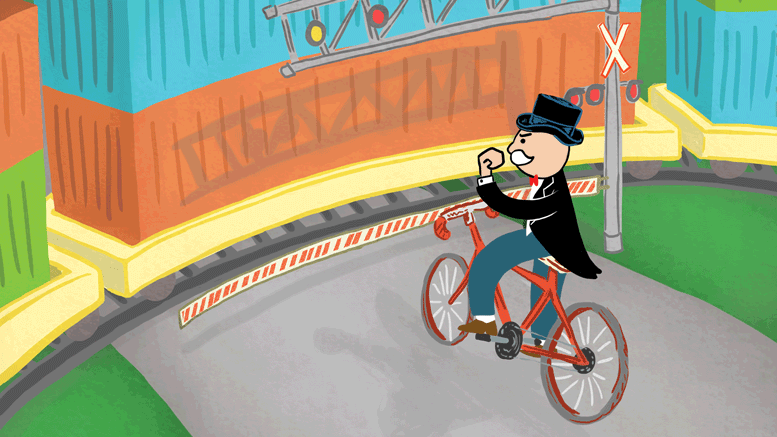City council has officially approved the Waverley St. railway underpass, the price tag of which is a staggering $155 million. All but one member of council voted in support of the project, which as recently as 2013 was ranked only as the 20th most important transportation project for the city. The meteoric ascendency in importance of the underpass is linked to – you guessed it – population growth in the southwestern suburbs.
Apparently that special brand of suburbanites, who insist on building houses on exceedingly productive agricultural land at the edge of the city, are also the kind of people who don’t like to have to wait at train crossings – even at train crossings they knew they would have to navigate multiple times a day when they purchased their little suburban slice.
And our city council, apparently, thinks the year is 1950, and that automobiles are the transportation method of the future. Aren’t we supposed to be working hard to complete a rapid transit system by 2030?
If the city stopped allowing an ever-expanding ring of suburban sprawl, it would not need to keep building interchanges and underpasses to deal with increased traffic. There would be no new traffic, since the areas in question would retain their current uses – and the city would not have to squander its money trying to fix a problem of its own creation.
Still, $155 million seems like a hefty price – the original cost of the Plessis Rd. underpass (which has since ballooned, as such things always do) was a meagre $77 million. Scope and structural differences aside, a part of the difference in cost stems from the manner in which the city not only accommodates, but actively avoids even disrupting the blissful suburban idyll of the wealthy.
That $155 million does more than pay for a new underpass; it pays for temporary roads and even temporary bike trails, both to be demolished once the actual project is finished.
There is already a bike trail along Waverley where it crosses the rail lines. It will be demolished as that area is turned into a construction spillover zone once the project begins. A new, temporary, bike trail will be built on the other side of Waverley to serve in its stead, along with a temporary diversion of the road itself.
Both of these are completely unrelated to the construction of the underpass itself – they are costs incurred (to say nothing of physical materials wasted and fossil fuels burned) so that the use of the intersection need not be interrupted. And let me just stress once more that the users of this intersection are not the poor or disadvantaged. Those people tend not to live in new suburbs; they tend not to drive cars.
Once the actual underpass is opened, it will contain a new bike path. The temporary paths and roads will be demolished. Heaven forbid that the people use Waverley should have to do the same thing that the people who use Plessis had to do for the duration of the construction – find an alternative route.
This is not an issue of the City of Winnipeg having a fetish for keeping bike paths eternally open and available for use, either. The bike path along Assiniboine Ave. has been blocked for the past few years by construction of a condo tower. That tower will soon be done, but another farther down the road is just gearing up, and will probably obstruct the path for several years in the future.
The downtown bike path is not only used by people of a variety of income levels, but perhaps more importantly by people who actually bike as their main mode of transportation. Letting this bike path languish while spending extra money so that the impatient wealthy never lose the chance to go for a leisure bike ride is nothing short of disgusting.





